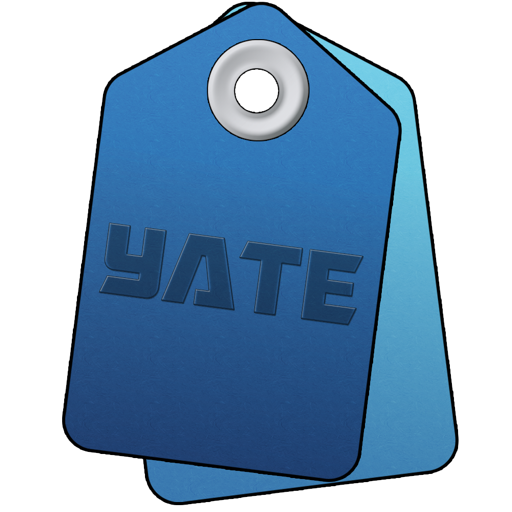

Exceptions may optionally be used when renaming files, while performing case modifications in the Multi Field Editor, via actions and via the Yate Transformations context menu.
An exception is a word which applies an override to the capitalization rules which are generally being applied. For each exception you can specify an override case modification. Force Exception is a special override case function where the word is always converted to the entered representation. You can also optionally specify that no changes should occur if the word is found exactly as entered in the exception. Abbreviation is only meaningful in the Title Case word list where it tells the Title Case processor that the word is an abbreviation when terminated with a period.
To create a new exception, click the + button under the rightmost table.
To remove exceptions, select one or more exceptions in the table and click the - button under the rightmost table.
To modify an exception, select a single exception in the table and click the ✎ button under the rightmost table.
In order to make it easier to manipulate a wide variety of files, exceptions may be saved in sets. The table on the left of the display displays the defined sets.
To create a new set click on the + button under the leftmost table.
To delete a set, select the sets you want to delete and click on the - button under the leftmost table.
To duplicate a set, select the set you want to duplicate, and click on the ➡ button under the leftmost table.
To rename a set, select the set and click on the ✎ button under the leftmost table.
The set identified by ✓ character is the default exception set. To make a different set the default, select the set and choose Set as Default Exception Set from the context menu displayed via a right click. The default exception set is the set used by case transformations and rename functions. If you want more granularity you can set separate defaults for case transformations and rename functions. You can use the context menu to specify different sets where C identifies the default for case transformations and R identifies the default for rename functions.
The set identified by the T character is used by the Title Case transformation to determine the set of small words not to be capitalized. To make a different set the default, select the set and choose Set as Names List from the context menu displayed via a right click. When you a word to be recognized as an abbreviation, make sure to set the Abbreviation case mode. This flag stops the period in the abbreviation from being interpreted as the end of a sentence.
The set identified by the N character is used by the Do name exceptions transformation option to determine the set of special words. To make a different set the default, select the set and choose Set as Title Case List from the context menu displayed via a right click. You can specify wildcard items in the list. Wildcard items must contain at least three characters. There are two variants:
- Name exception ends with an *
- If a word begins with the text before the * character, it will use the text before the * and all following characters will be in lower case. For example MACDONALD matched against a name exception of MacD* will be converted to MacDonald.
- Name exception ends with a ?
- If a word begins with the text before the ? character, it will use the text before the ?. The next character wil be capitalized and subsequent characters will be in lower case. For example MCVIE matched against a name exception of Mc? will be converted to McVie.
The set identified by the S character is the Natural Sort Exception Set. This set is used when sorting the Album, Title, Artist, Album Artist and Composer fields while the Use natural sorting option is set in Settings-File List. The set contains the list of words to be ignored if they are at the start of a field. To make a different set the default, select the set and choose Set as Natural Sort List from the context menu displayed via a right click.
The set identified by the W character is the Weight Exception set. This set is used by various algorithms when attempting to match items. It typically contains words such as a, and and the. The set describes words which are not considered when matching.
Note that more than one special set association cannot be applied to a particular set.
To export one or more sets so that they can later be imported, select one or more sets in the table and click the Export button. This is a smart export. All Custom Field accesses are exported in such a way that they can be conditionally remapped when imported.
The width of the two tables can be adjusted by dragging the border that separates the two tables.
Additional information can be found in: